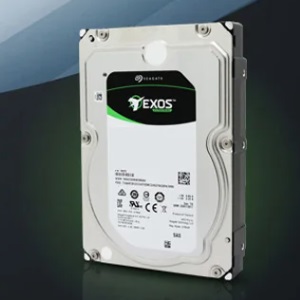For years, the debate has raged on about whether HDD (Hard Disk Drive) or SSD (Solid-State Drive) represents the future, and whether SSDs will eventually render HDDs obsolete. Yet, the lack of a definitive answer underscores the fact that both technologies are not mutually exclusive but rather complementary: one excels in large capacity and low cost, while the other triumphs in high performance.
In fact, within data centers and corporate environments, approximately 90% of data is stored on HDDs, owing to their unparalleled durability and stability that SSDs struggle to match.
In this pursuit, industry giants like Seagate have relentlessly invested in developing novel mechanical storage technologies, one of which is the frequently mentioned HAMR (Heat-Assisted Magnetic Recording). After over two decades and hundreds of millions of dollars invested, Seagate has finally brought HAMR to mass production and practical application.
This technological breakthrough is embodied in the newly launched Mozaic 3+ platform, which was officially announced earlier this year.

The essence of HAMR lies in enhancing storage density, thereby doubling the overall capacity of hard drives. The fundamental principle involves reducing the size of magnetic particles and packing them more densely, leading to a significant increase in areal density.
When the platters of a mechanical hard drive spin at high speeds, they write and rewrite the magnetic polarity of magnetic particles, and the smaller the particles, the greater the areal density.
However, as the density increases, so does the risk of particles losing their magnetism or being re-magnetized by nearby read-write operations. Placing two magnetic particles too close together can make them unstable.
Seagate has researched a new platinum alloy medium that can magnetize smaller particles, but it cannot operate at room temperature. Instead, it requires a laser beam to rapidly heat a small spot on the medium, allowing the particles to be magnetized, then cooling and stabilizing them.
With a 12nm process integrated controller, magnetic core, superlattice platinum alloy medium, nanophotonic laser, photonic funnel, quantum antenna, seventh-generation spin reader, plasma writer, and a series of other complex and advanced components, Seagate has finally brought HAMR (Heat-Assisted Magnetic Recording) technology to fruition, becoming the only company to commercialize this technology.
The Magic Box 3+ platform, based on HAMR technology, has achieved a groundbreaking single-platter capacity of over 3TB, enabling Seagate’s flagship enterprise-class Exos Galaxy hard drives to exceed 30TB in capacity, which are already being shipped in volume.
In the future, the capacity of a single disk will continue to surpass 4TB and 5TB, and the capacity of a single platter can easily exceed 40TB and 50TB!
For enterprises and data centers, larger-capacity individual hard drives mean a significant reduction in the number of hard drives required for the same demand, thereby saving space, cutting costs, and being more environmentally friendly.
If all 16TB hard drives are upgraded to 30TB, the power consumption per terabyte can be reduced by 45%.
Especially amidst the wave of AI, with data continuing to grow exponentially, the demand for storage has reached unprecedented heights, making HAMR technology a timely solution.
Regarding the reliability of HAMR hard drives, Seagate believes they are comparable to traditional hard drives, with a lifespan of approximately 10 years.
Seagate stated, “This technology (HAMR) is not merely a simple upgrade but a new platform, a turning point, that will lead us to broader and better horizons.”
“With the advent of the AI era, solid-state drives and hard disk drives will coexist for a long time, as each storage technology and medium has its own unique value.”



